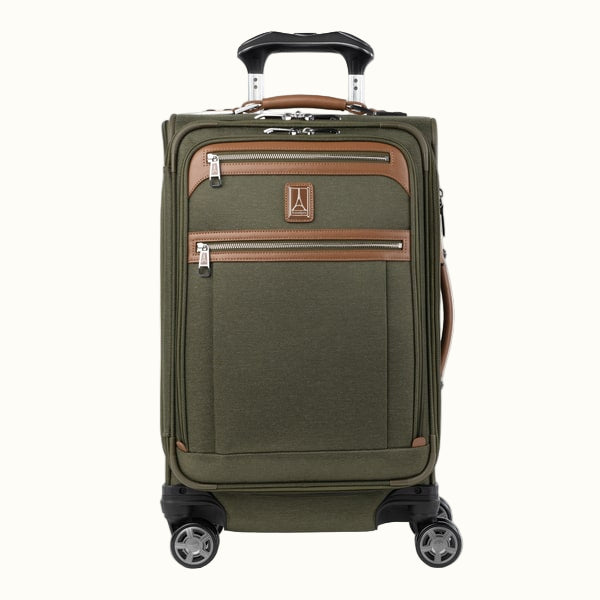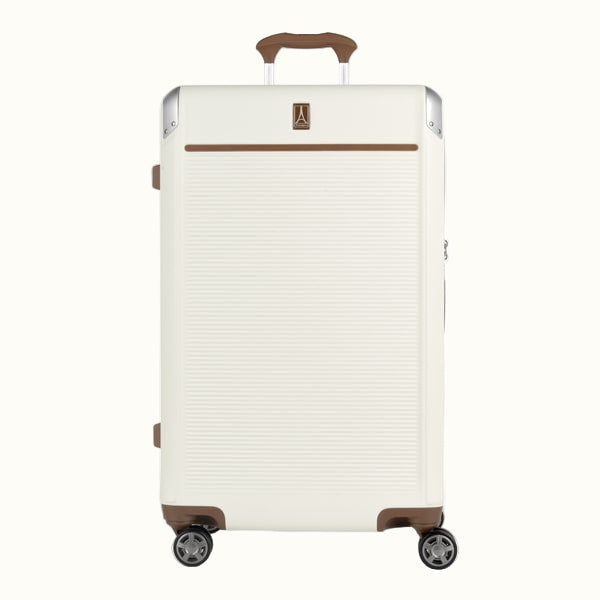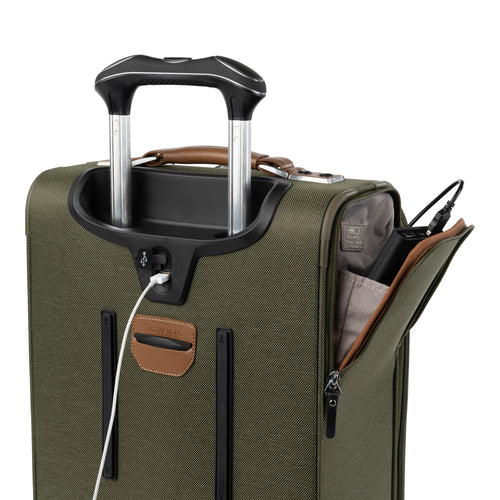Built-in USB outlets and portable charger pockets like those seen in the Travelpro Platinum® Elite 21” Expandable Carry-On Spinner are convenient ways to keep devices charged while traveling. Most portable chargers use lithium-ion batteries that contain flammable materials. Airlines have specific rules for traveling with portable chargers to ensure safety and reduce the risk of fire.
Can you bring a portable charger on a plane?
You can bring a portable charger on a plane if it is packed securely in your carry-on luggage. You cannot pack chargers in check-in luggage. Battery components can cause fires in the wrong conditions, and flight crews can respond to a fire in a carry-on bag faster and more efficiently than a fire in the cargo hold.
If you have carry-on luggage with a dedicated charger pocket, like the Crew™ VersaPack™ Max, disconnect the battery from the bag’s USB ports before security screening and keep the charger in its pocket. If you must use the charger in the departure lounge, disconnect the battery before boarding the plane.
If your luggage does not have a dedicated charger pocket, pack the battery with easy access in mind, as security agents may want to inspect it. Protect the battery from damage, and pack it so battery ports cannot short-circuit. Ways to prevent short-circuiting include:
- Preventing battery ports from contacting other metals.
- Packing batteries in their original retail packaging.
- Covering battery ports with tape.
- Packing batteries in plastic bags, cases, or dedicated charger pockets.
Size
When people ask, “What size portable charger can I bring on a plane,” they’re asking the wrong question. It’s not the battery's physical size that counts; it’s the battery’s maximum capacity. Airlines have no set limit on the dimensions of a portable charger, and most fit easily into carry-on luggage. However, An exceptionally large charger is likely to have a battery capacity that exceeds airline regulations.
Milliamp Hour (mAh)
Airlines typically limit power chargers to batteries with 100-watt hours (Wh), although you can pack batteries capable of 160 Wh if you get preapproval from the airline. The 100Wh limit covers standard electronics such as smartphones, tablets, laptops, and headphones.
Many batteries measure capacity in milliamp houses (mAh) instead of watt-hours, which can be confusing. Batteries with ratings of up to 27,000mAh are allowed on planes. For convenience, consult the following chart to see if a charger meets airline regulations:
| Milliamp Hours | Allowable or Not |
|---|---|
|
Can I bring a 10,000mAh power bank on planes? |
Yes |
|
Can I bring a 20,000mAh power bank on a plane? |
Yes |
|
Is a 30,000mAh power bank allowed in flight? |
30,000mAh exceeds the 27,000mAh limit but may be permitted with airline pre-approval |
|
Can I bring a 50,000mAh power bank on a plane? |
Not Permitted |
Types of chargers not allowed on a plane
So what type of batteries are not allowed on airplanes? Other than the 100Wh/27,000mAh rule, the FAA does have some limitations:
- Power chargers must be for personal use only.
- Power chargers intended for resale are prohibited.
- Damaged batteries and chargers are not allowed.
Checking in portable chargers
If you have to check a portable charger in, remember items containing lithium-ion batteries will probably be forbidden. Ask your airline for permission to check the charger, and if approved, switch off the charger’s power source. Non-spillable wet batteries, lithium metal batteries, dry alkaline batteries, and dry rechargeable batteries can travel in check-in luggage. Battery-powered e-cigarettes and vaporizers must travel in carry-on and cannot be used on a plane.
Looking for carry-on with a dedicated power charge? Check out the Travelpro Platinum® Elite Carry-On Expandable Hardside Spinner!





